Area of Search Devon Interest Biological Notification 1964 | Grid reference SX612774 | |
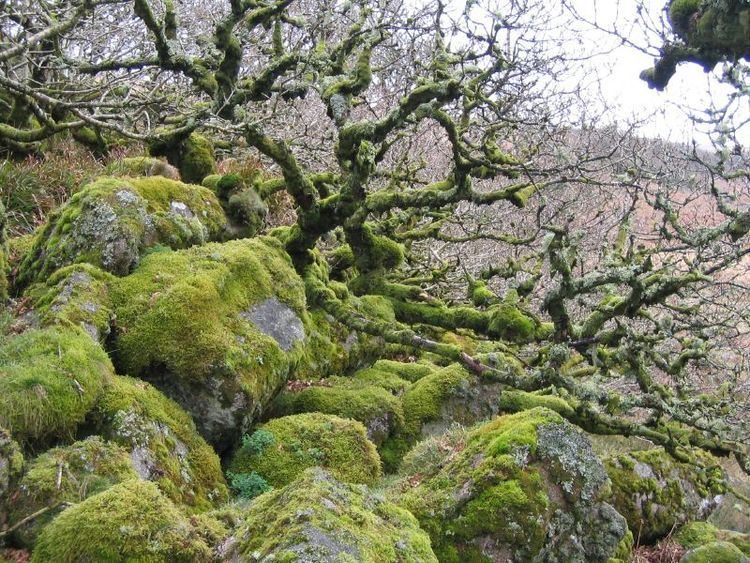 | ||
Area 3.5 hectares (0.03500 km; 0.01351 sq mi) | ||
Wistman s wood devon national nature reserve
Wistman's Wood is one of only three remote high-altitude oakwoods on Dartmoor, Devon, England. (The other two are Black Tor Beare on the West Okement at SX565892 and Piles Copse on the River Erme at SX644620.)
Contents
- Wistman s wood devon national nature reserve
- Wistman s wood dartmoor by anita ridley
- Geography
- Preservation status
- Description
- Flora
- Fauna
- History
- Myths art and literature
- References

Wistman s wood dartmoor by anita ridley
Geography
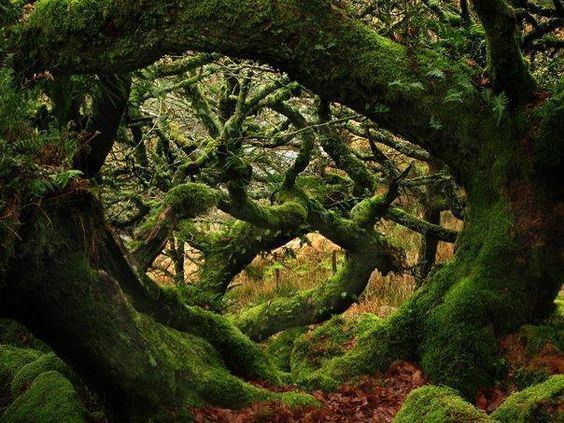
It lies at an altitude of 380–410 metres in the valley of the West Dart River near Two Bridges, at grid reference SX612774.
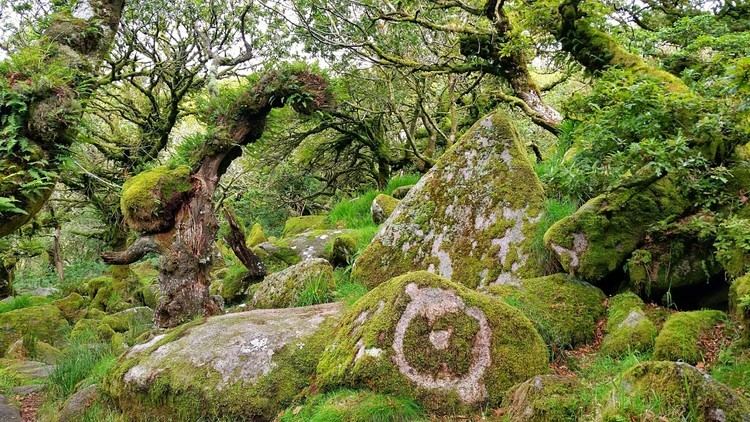
The source of the Devonport Leat, at a weir on the West Dart River, is just north of the wood.
Preservation status

This is one of the highest oakwoods in Britain and, as an outstanding example of native upland oak woodland, was selected as a Site of Special Scientific Interest in 1964. It is also an NCR site and forms part of the Wistman’s Wood National Nature Reserve. The wood was also one of the primary reasons for selection of the Dartmoor Special Area of Conservation.
Description
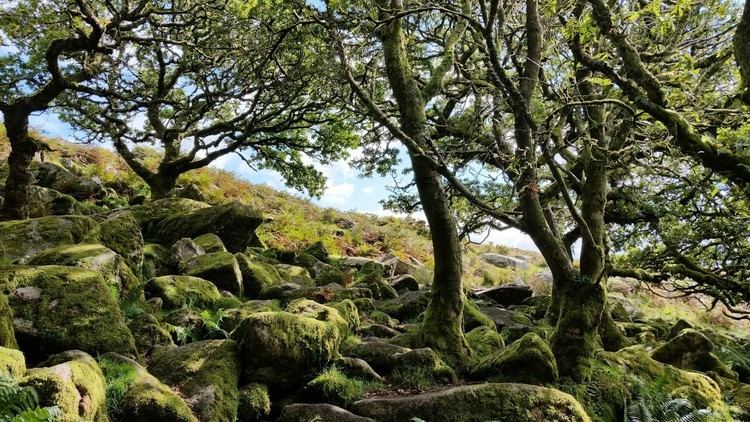
The wood is split into three main blocks (North, Middle and South Groves or Woods), which in total cover about 3.5 ha (9 acres). These occupy sheltered, south-west facing slopes, where a bank of large granite boulders ("clitter") is exposed, and pockets of acid, free-draining, brown earth soils have accumulated. It is owned by the Duchy of Cornwall and has been managed since 1961 under a nature reserve agreement with the Nature Conservancy Council, English Nature and Natural England. There is no active management, but many people visit the site on foot (mostly accessing the southern end of South Wood), and cattle and sheep have free access where the terrain permits, outside of a small fenced exclosure in South Wood.
Flora
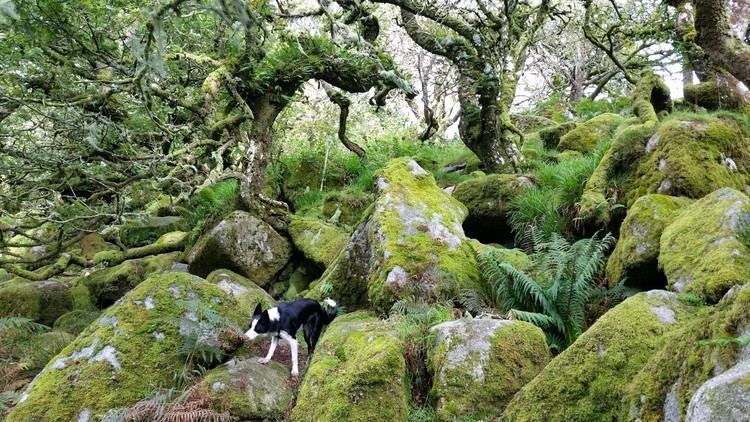
The vegetation conforms mostly to W17a Quercus petraea-Betula pubescens-Dicranum majus woodland, Isothecium myosuroides-Diplophyllum albicans sub-community in the British National Vegetation Classification. The trees are mainly pedunculate oak, with occasional rowan, and a very few holly, hawthorn, hazel, and eared-willow. Tree branches are characteristically festooned with a variety of epiphytic mosses and lichens and, sometimes, by grazing-sensitive species such as bilberry and polypody. On the ground, boulders are usually covered by lichens and mossy patches – frequent species include Dicranum scoparium, Hypotrachyna laevigata, Rhytidiadelphus loreus and Sphaerophorus globosus – and, where soil has accumulated, patches of acid grassland grow with heath bedstraw, tormentil and sorrel. In places protected from livestock, grazing-sensitive plants such as wood sorrel, bilberry, wood rush and bramble occur. A fringe of bracken surrounds much of the wood, demarcating the extent of brown earth soils.
Fauna
The wood is home to a large population of adders.
History
Wistman's Wood has been mentioned in writing for hundreds of years. It is likely a left-over from the ancient forest that covered much of Dartmoor c. 7000 BC, before Mesolithic hunter/gatherers cleared it after around 5000 BC. Photographic and other records show that Wistman's Wood has changed considerably since the mid-19th century; at the same time climatic conditions have also generally become warmer. Not only have the older oak trees grown from a stunted/semi-prostrate to a more ascending form, but a new generation of mostly straight-grown and single-stemmed oaks has developed. The oldest oaks appear to be 400–500 years old, and originated within a degenerating oakwood that survived in scrub form during two centuries of cold climate. In c. 1620 these old trees were described as "no taller than a man may touch to top with his head". Tree height increased somewhat by the mid-19th century, and during the 20th century approximately doubled (in 1997 the maximum and average height of trees was around 12 m and 7 m respectively). In addition, a wave of marginal new oaks arose after c. 1900, roughly doubling the area of wood. Part of the evidence for these changes comes from a permanent vegetation plot located in the southern end of South Wood. This is the oldest known of its kind in British woodland, with a small part having been recorded by Hansford Worth in 1921.
The Buller Stone, a boulder to the east of the wood, commemorates an attempt in 1866 to date the trees, when Wentworth Buller (with permission from the Duchy) felled an oak. It was estimated to be 168 years old.
Myths, art and literature
The wood has been the inspiration for numerous artists, poets, photographers and appears in hundreds of nineteenth century accounts. One tradition holds that it was planted by Isabella de Fortibus (1237-93).
The wood is described in detail and discussed as a point of great interest in The Tree, a 1978 essay on naturalism by English novelist John Fowles.
The name of Wistman's Wood may derive from the dialect word 'wisht' meaning 'eerie/uncanny', or ‘pixie-led/haunted’. The legendary Wild Hunt in Devon is particularly associated with Wistman's Wood – the hellhounds of which are known as Yeth (Heath) or Wisht Hounds in the Devonshire dialect.
